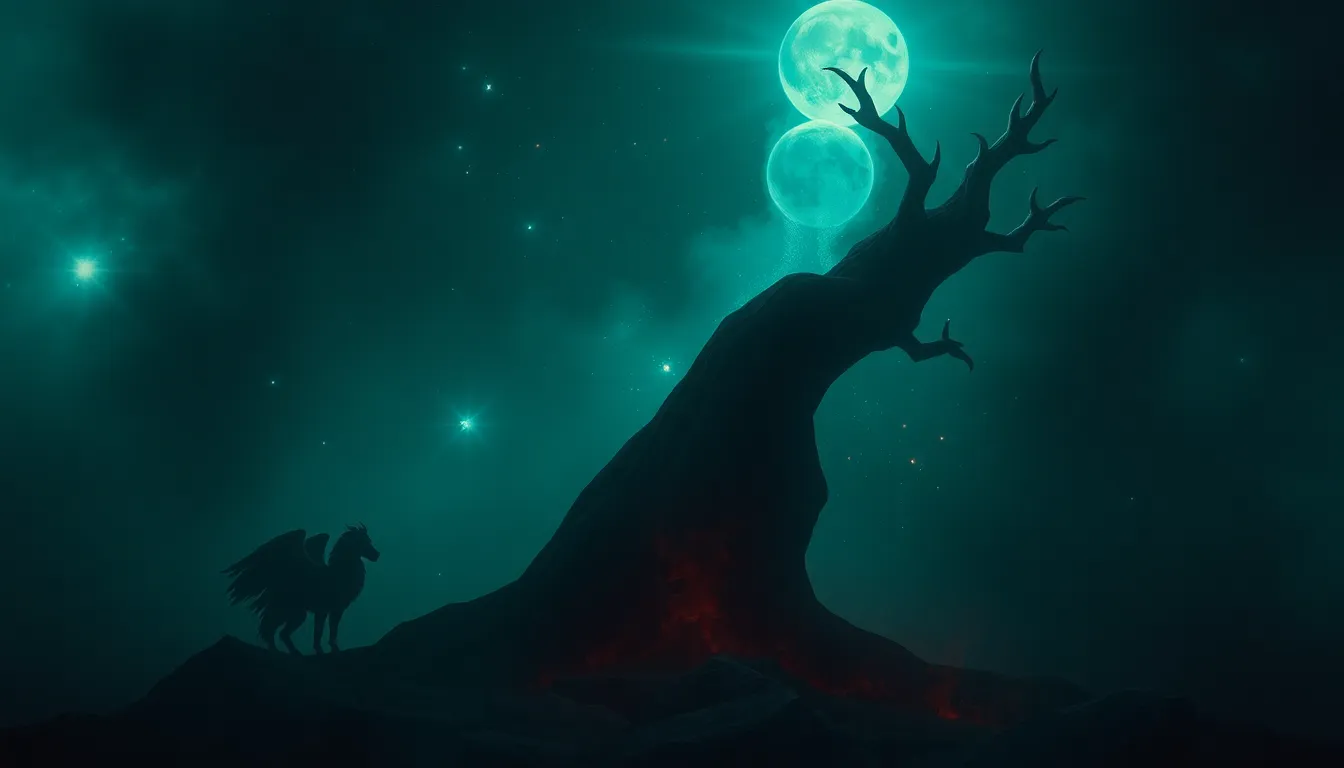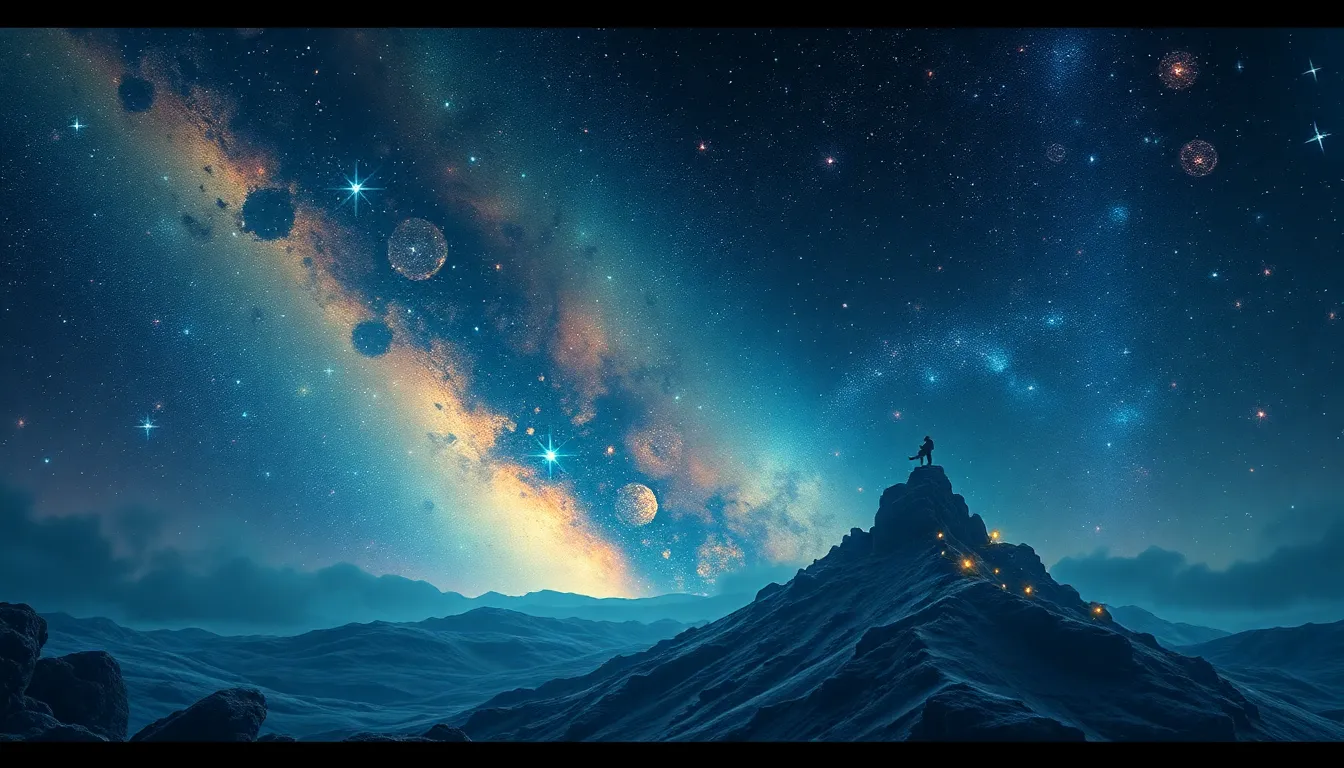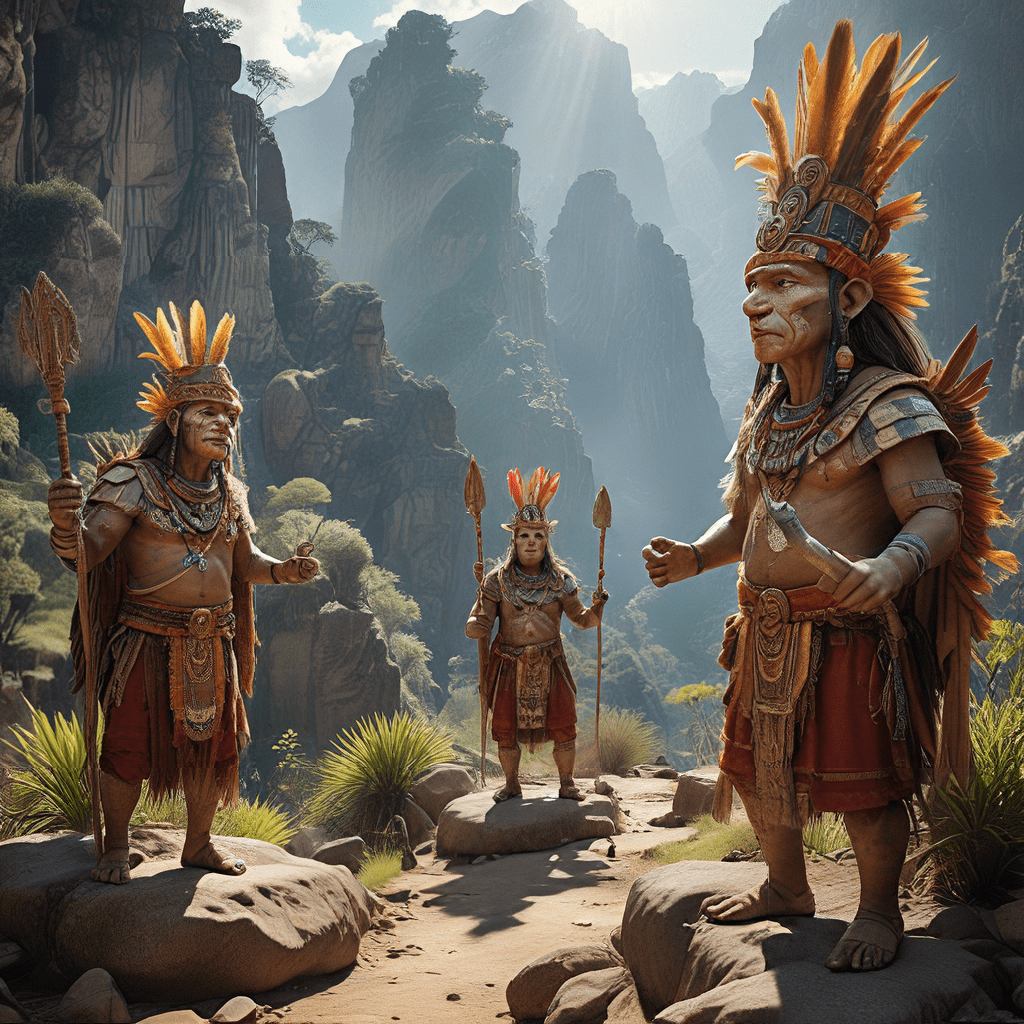Ancient Deities and Their Role in the Cosmos: Mythological Perspectives
I. Introduction
Ancient deities are divine beings that have been worshipped across various cultures and civilizations throughout history. These gods and goddesses often embody fundamental aspects of existence, nature, and the cosmos. Understanding ancient deities is crucial for comprehending how different societies perceived the universe and their place within it.
Mythology plays an essential role in shaping cultural perspectives on the cosmos, offering insights into the beliefs, values, and practices of ancient peoples. Through myths, humans have sought to explain the mysteries of the universe, the origins of life, and the forces that govern existence.
This article aims to explore the significance of ancient deities within the context of the cosmos, examining creation myths, the pantheon of gods, natural forces, and the afterlife. We will also consider the legacy of these mythological figures in contemporary cosmological discussions.
II. The Concept of the Cosmos in Ancient Cultures
The cosmos, in ancient cultures, was understood in various ways, reflecting the unique experiences and observations of each civilization. From the structured celestial spheres of the Greeks to the cyclical nature of time in Hindu cosmology, the interpretations of the cosmos reveal a rich tapestry of thought.
- Greeks: Viewed the cosmos as a harmonious order governed by rational principles.
- Egyptians: Saw the cosmos as a complex interplay of gods, with the Nile and celestial bodies playing vital roles.
- Hindus: Emphasized cycles of creation and destruction, reflecting the eternal nature of the universe.
Astronomy significantly influenced mythological narratives, as celestial phenomena were often interpreted as the actions or messages of deities. The movements of stars and planets were understood to reflect the will of the gods, which in turn shaped religious beliefs and practices.
III. The Creation Myths: Gods and the Birth of the Universe
Creation myths are foundational stories that explain the origins of the universe and the gods who inhabit it. Different cultures have their unique narratives about how the cosmos came into being:
- Chaos (Greek): The primordial void from which everything emerged.
- Brahma (Hindu): The creator god who brought the universe into existence through meditation.
- Atum (Egyptian): The self-created god who birthed the first gods and the universe.
These myths often symbolize cosmic order, illustrating how chaos transformed into structured existence. The act of creation is frequently depicted as an expression of divine power, reinforcing the idea that the cosmos is a manifestation of the gods’ will.
IV. The Pantheon of Ancient Deities
Across various cultures, there exists a rich pantheon of deities, each with specific roles and attributes related to the cosmos.
A. Major Deities Across Cultures and Their Cosmic Roles
- Zeus (Greek): King of the gods, associated with the sky and thunder.
- Ra (Egyptian): Sun god, representing light, order, and creation.
- Shiva (Hindu): The destroyer and transformer, embodying the cyclical nature of the universe.
- Marduk (Mesopotamian): The god of creation and order, who defeated chaos to establish the cosmos.
B. Lesser-Known Deities and Their Contributions
In addition to the major deities, many lesser-known gods contributed to cosmic understanding. For instance, the Slavic god Perun personified thunder and storms, while the Inuit goddess Sedna governed the sea and marine life, illustrating the diversity of divine representations.
C. The Interplay Between Deities and Natural Phenomena
The relationship between deities and natural phenomena underscores the significance of these gods in everyday life. Ancient peoples often attributed natural events, such as earthquakes or floods, to the actions of specific deities, reinforcing their importance in the cultural psyche.
V. Deities and the Natural Forces of the Cosmos
Many ancient cultures personified natural forces through deities, creating a direct connection between the divine and the natural world. This personification played a critical role in rituals and cultural practices.
A. Personification of Natural Forces
- Storms: Thunder gods like Thor (Norse) and Tlaloc (Aztec) were revered for their power over rain and thunderstorms.
- Seasons: Goddesses such as Demeter (Greek) and Persephone (Greek) represented the cycles of growth and decay, intertwining agriculture and celestial rhythms.
- Celestial Bodies: The sun was often personified as a powerful deity, such as Helios (Greek) and Surya (Hindu).
B. Rituals and Practices to Appease or Honor These Deities
Rituals were conducted to honor these deities and ensure harmony between humans and natural forces. Offerings, sacrifices, and seasonal festivals were common practices aimed at appeasing the gods and ensuring their favor.
C. Case Studies
– The worship of Thor involved feasts and celebrations during storms to honor his power.
– The worship of Demeter included the Eleusinian Mysteries, which celebrated the fertility of the Earth and the changing seasons.
VI. The Afterlife and Cosmic Order: Deities of Death and Beyond
Ancient deities significantly influenced beliefs about the afterlife, shaping how societies understood life, death, and moral order.
A. How Ancient Deities Shaped Beliefs About the Afterlife
Different cultures had distinct views on the afterlife, often guided by their deities. For example, the Egyptians believed in a judgment after death, overseen by Osiris, while in Hinduism, Yama serves as the god of death and the ruler of the underworld.
B. The Role of Judgment and Moral Order in the Cosmos
Many myths emphasize the importance of moral behavior in life, which directly affected one’s fate in the afterlife. The judgment of souls by deities often reinforced societal values and ethical conduct.
C. Comparison of Underworld Deities
- Hades (Greek): Ruler of the underworld, overseeing the realm of the dead.
- Osiris (Egyptian): God of the afterlife and resurrection, symbolizing rebirth.
- Yama (Hindu): The god of death, responsible for guiding souls to their next existence.
VII. Myths of Conflict and Harmony Among Deities
Myths often depict conflicts among deities, symbolizing the struggle between chaos and order, good and evil. These narratives are rich in themes of balance and duality.
A. Cosmic Battles and Their Significance
Stories such as the Titans’ revolt against the Olympians or Ra’s battle with Apophis highlight the ongoing struggle for cosmic order. These narratives serve to reinforce the idea that balance is necessary for harmony in the universe.
B. Themes of Balance and Duality in Mythology
Many mythologies emphasize duality, such as light versus darkness or creation versus destruction, reflecting the complexity of existence.
C. The Impact of These Narratives on Societal Values and Governance
The stories of divine conflict often mirrored societal challenges, providing frameworks for understanding governance, justice, and morality within communities.
VIII. The Legacy of Ancient Deities in Modern Cosmology
Ancient mythologies continue to influence contemporary views of the universe, shaping our understanding of existence and spirituality. The resurgence of interest in mythology highlights its relevance in modern science and personal belief systems.
A. How Ancient Mythologies Influence Contemporary Views of the Universe
Many modern scientists and philosophers draw parallels between ancient myths and contemporary cosmological theories, finding value in the stories that seek



